Blog
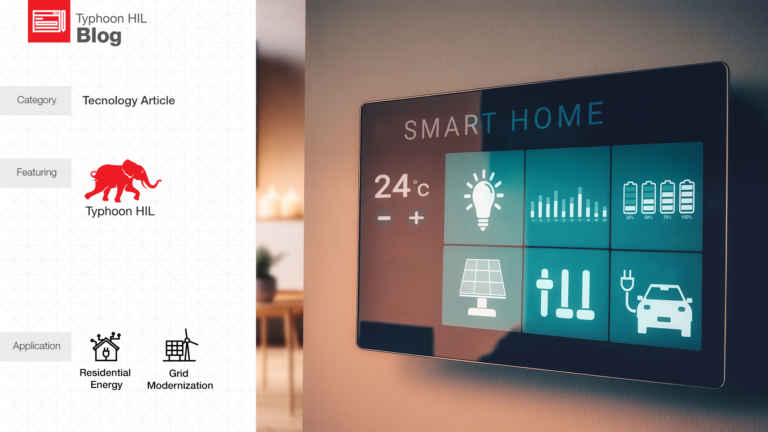
How Smart Buildings Drive Energy Efficiency and Sustainability in Modern Communities
January 30, 2025
Smart buildings are revolutionizing the way we approach energy efficiency and sustainability. By combining passive design with intelligent control systems, these structures optimize energy use, integrate renewable sources, and may even produce and share energy within community microgrids. As electricity consumption in building operations represents nearly 55% of global electricity consumption, smart energy …

Mastering Microgrid Control Testing: Innovations for a Sustainable Future
December 13, 2024
Microgrids and distributed energy resources are critical to a sustainable energy future, but their complexity demands advanced control strategies and rigorous testing. Explore how cutting-edge HIL simulation tools and hybrid control approaches are simplifying microgrid management, improving stability, and enabling seamless integration of renewable energy sources for a greener tomorrow. Read the full blog to…

Why Clocks Matter: Exploring Their Critical Role in Power Grid Operations
October 31, 2024
Discover how Henry E. Warren’s invention of the master station clock revolutionized power grid frequency regulation, paving the way for interconnected grids that power the world today. Learn more about the history and lasting impact of this groundbreaking innovation, along with how HIL global time synchronization is implemented in the Typhoon HIL environment, in this blog article.

Testing Digital Substations: Advancements with Hardware-in-the-Loop Technology
September 4, 2024
Advancements in Hardware-in-the-Loop (HIL) technology are revolutionizing the testing and lifecycle maintenance of digital substations, offering significant improvements in efficiency, reliability, and safety. By integrating real-time simulation with substation components, HIL systems enable comprehensive testing of protection schemes, effective and safe training for engineers, and seamless integration with…

Leading Microgrid and e-Mobility Innovation with HIL
August 23, 2024
Microgrids and e-Mobility are revolutionizing the energy sector by enhancing efficiency, reducing costs, and ensuring system reliability. The CERTI Foundation, in collaboration with Typhoon HIL, is leading these innovations with cutting-edge real-time simulation and digitalization. Their work is crucial in shaping a sustainable and resilient energy future. Discover more about these transformative advancemen…

Power System Stability Research with HIL at the University of Trieste
March 25, 2024
This blog article explores the research of Prof. Daniele Bosich from the University of Trieste in Italy, focusing on his group’s work on DC system stability using Hardware-in-the-Loop (HIL) simulation. It delves into the challenges, solutions, and advantages of using Typhoon HIL for research, education, and industry collaboration in power systems.

How Digital Twins Accelerate the Energy Transition
July 8, 2022
A digital twin is a virtual representation of a physical system, allowing for real-time simulation and analysis through Hardware-in-the-Loop (HIL) testing. By integrating digital twins with HIL, you can simulate and validate system performance in a controlled environment, enhancing both design accuracy and operational efficiency. Various types of digital twins include physical, operational, and system twins…
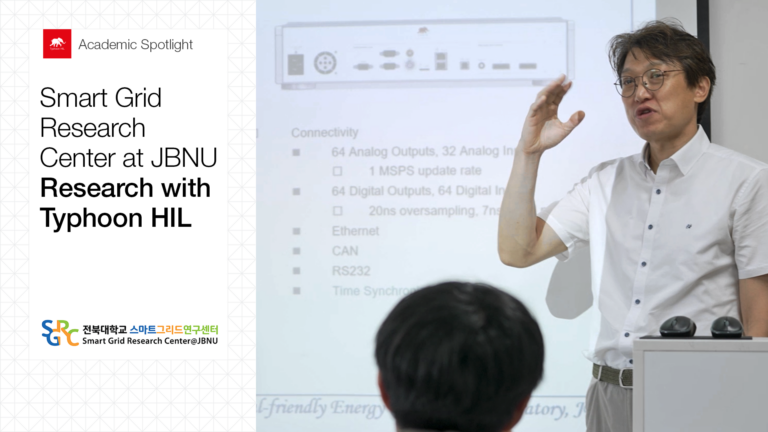
Smart Grid Research Center at JBNU Presents Its HIL Research
February 23, 2022
SGRC, one of the leading research centers in Korea, significantly contributes to industrial smart grid-related R&D activities. In this Academic Spotlight, learn how Typhoon HIL solutions were utilized in their industry-academia projects and discover the main benefits they see in using HIL in their research. Read the blog to learn more about SGRC’s innovative work and their collaboration with Typhoon HIL.

Complying with standards in microgrid system integration | Hitachi Energy
November 10, 2021
Blog Highlights
Hitachi Energy’s installations across the world reduce the likelihood of mistakes with system configuration, deployment, and operation, and allow them to juggle competing requirements.
Hitachi Energy pairs these capabilities with HIL modeling and testing to ensure microgrids are the right fit for the market.
Hitachi Energy applies HIL testing to comply with certification and standards, …

Reducing surprises in the field in microgrid system integration | Rolls Royce
November 3, 2021
Blog Highlights
Rolls Royce Power Systems takes off-the-shelf items of equipment and brings them together to make an AC coupled battery storage system.
Rolls Royce integrates with the whole microgrid with centralized control, ensuring all the different parts work together.
Using HIL testing allows Rolls Royce to reduce surprises in the field, making commissioning easier and faster.
Rolls Royce Power Sys…

Increasing confidence with HIL testing in microgrid system integration | Duke Energy
October 27, 2021
Blog Highlights
Testing in a simulated environment reduces the potential risk of damaging customer equipment.
Closed-loop systems like HIL enable fine-tuning HIL models.
HIL digital twins enable a testing ground for plug-and-play microgrids.
With HIL, site testing and debugging of software can be completed ahead of deployment.
Duke Energy, providers of microgrid solutions since 2013, decided to start u…

HIL Addresses Microgrid System Integration Challenges
October 22, 2021
Integrating and validating microgrid systems involves tackling complex challenges and choosing the right testing methods. From assessing the pros and cons of different validation approaches to streamlining development with model-based engineering, effective microgrid design and testing are crucial. Hardware-in-the-Loop (HIL) testing plays a key role in ensuring functionality, while real-world case studies f…

HIL Testing is Part of the Culture for Steven VanWerkhoven’s Team at Schneider Electric
July 22, 2021
This blog explores the main challenges of inverter control design, development, testing, and certification, delving into the setup of a C-HIL for hybrid inverter control testing. It highlights how test automation can accelerate inverter software update verification and how HIL can expedite product development while enhancing product robustness and quality. Read the blog to learn more about these innovative …

4 Lessons Learned from the Otis Microgrid Project
June 8, 2021
The Otis Air National Guard Base Microgrid Project showcases how strategic integration of new and existing energy technologies can significantly enhance power reliability and energy security. By incorporating Typhoon HIL’s Controller Hardware-in-the-Loop (C-HIL) solution, Raytheon Technologies successfully designed and tested a microgrid control system that not only supports critical real-time missions bu…

ESTCP 2020 Project Award for Integrated Model-Based Design Process
May 28, 2021
Ensuring secure and resilient energy and water supplies is critical for military installations. Over the past eight years, the Environmental Security Technology Certification Program (ESTCP) has deployed innovative technologies to improve energy security and backup power reliability during grid outages. Microgrids are a promising technology in this sector, reducing operating costs and generating revenue by …

ARPA-E: Distributed Grid Control of Flexible Loads and DERs
May 27, 2021
The growing adoption of Distributed Energy Resources (DERs) like photovoltaic systems, battery energy storage, and fuel cells has heightened the need for effective coordination within the power grid. Researchers from the University of Illinois at Urbana-Champaign (UIUC), in collaboration with Typhoon HIL and Missouri S&T, are addressing this challenge by developing and testing a distributed control architec…
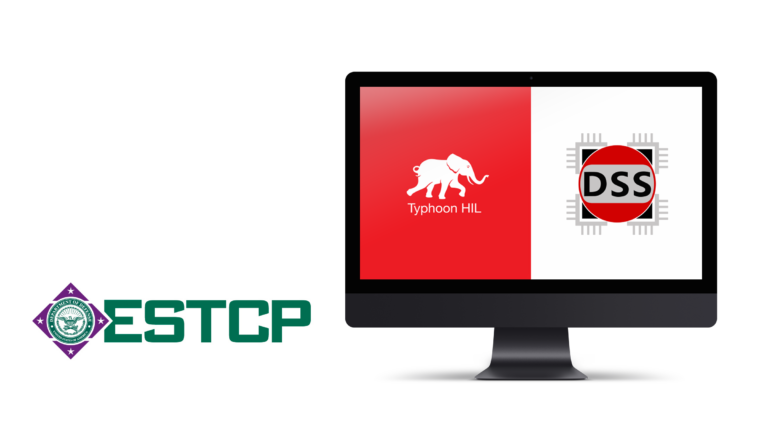
Load Flow for a Better Way to Design Microgrids and Power Systems
April 29, 2021
The integration of OpenDSS software into the Typhoon HIL platform enables seamless transitions to real-time, deterministic power flow analysis, enhancing the precision and efficiency of microgrid evaluations. In alignment with the DoD Digital Engineering Strategy (2018), the US Office of the Secretary of Defense’s Environmental Security Technology Certification Program (ESTCP) funded Typhoon HIL to demons…
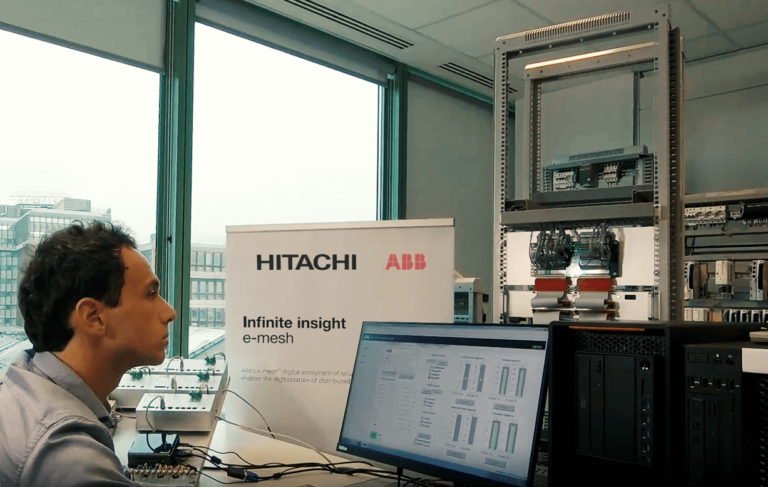
Hitachi Energy Pushes Limits of Testing e-mesh Controls with Typhoon HIL Solutions
April 21, 2021
The e-mesh Control system is engineered for the seamless integration of renewables with traditional energy assets, but ensuring coordinated communication among multiple e-mesh controls poses a significant challenge. By utilizing Typhoon controller Hardware-in-the-Loop (HIL) technology, the design and testing of e-mesh controls were significantly accelerated, resulting in increased test coverage. This HIL Te…

Hitachi Energy Grid Edge Solutions Spotlight with Tilo Buehler
March 16, 2021
Hitachi Energy faced the challenge of integrating various Distributed Energy Resources (DERs) and controlling multiple loads within a complex system. While Software-in-the-Loop was initially used for developing control algorithms, the need for real controllers led to the adoption of Controller Hardware-in-the-Loop (C-HIL) technology. C-HIL provides the necessary grid flexibility and adaptability, covering m…
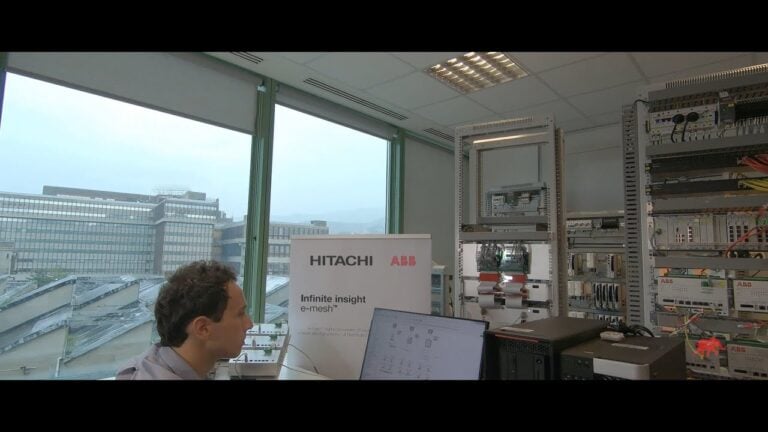
Hitachi Energy E-mesh Solutions | Part 2
March 9, 2021
Typhoon HIL solutions enable Hitachi Energy to push the limits of testing product functionality, addressing customer needs throughout the entire product lifecycle. While Software in the Loop (SIL) aids in developing individual algorithms, a higher fidelity testing environment like Controller Hardware-in-the-Loop (C-HIL) is essential to ensure the system functions cohesively. C-HIL combines real hardware con…

Hitachi Energy E-mesh Solutions | Part 1
March 2, 2021
Decentralization, decarbonization, and digitalization are key forces driving the development of emerging technologies for the distributed control of microgrid assets. Hitachi Energy’s e-mesh is a vertically integrated system that optimizes distributed energy resources from the device level to the systems control and IoT domain, ensuring a stable and reliable electricity supply. In Norway, a football arena e…

Raytheon uses Typhoon HIL to Design and Test Otis Microgrid Controls
December 17, 2020
The Otis Microgrid at Joint Base Cape Cod, MA, serves as a model for military microgrid projects, showcasing how Controller Hardware-in-the-Loop (C-HIL) has increased test coverage for Raytheon Microgrid Controls. By simulating power stages such as wind turbines, diesel generators, and BESS, the project addresses utility concerns including island-mode protection, cybersecurity, and hardware damage preventi…
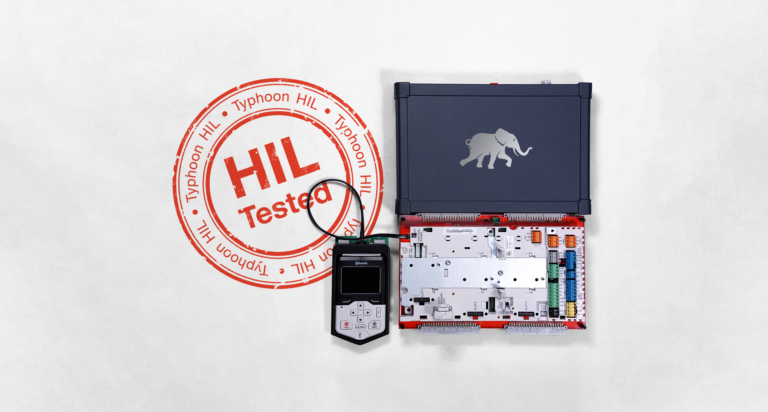
Testing Strategies for Building Decentralized Grids
December 9, 2020
As energy networks become increasingly decentralized, driven by advancements in Industry 4.0, Distributed Energy Resources (DERs), and electric vehicles (EVs), the need for robust local control and storage systems is more critical than ever. Hardware-in-the-Loop (HIL) technology is revolutionizing power electronics testing, enabling real-time, high-fidelity validation of new devices at a fraction of the cos…

Why is a Full Microgrid Control Digital Twin Necessary in C-HIL?
November 26, 2020
The electric power systems are undergoing a transformative transition characterized by digitalization, decentralization, and decarbonization, leading to more resilient power grids. This shift is facilitated by the increased adoption of digital technologies, renewable energy sources, and advanced battery storage systems. ETAP and Typhoon HIL are at the forefront of this transition, offering integrated soluti…
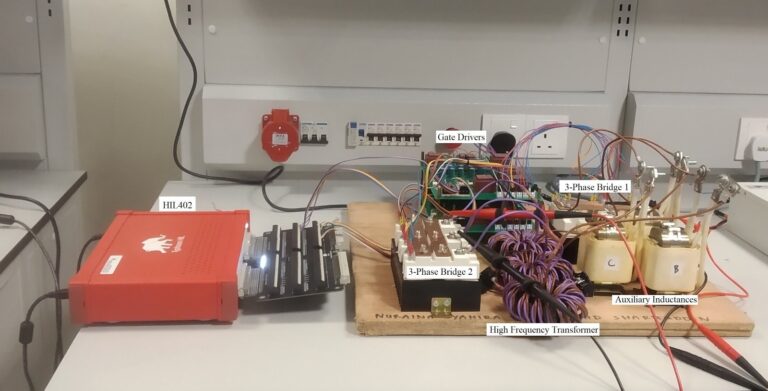
UNITEN Nanogrids and BESS Systems Research with HIL
September 16, 2020
In this spotlight episode, Dr. Nadia Mei Lin Tan, Associate Professor at UNITEN, and her graduate student, Nuraina Syahira, discuss how they use Typhoon Hardware-in-the-Loop (HIL) technology for nanogrid and battery energy storage applications. They share insights on the advantages of HIL, such as real-time simulation, which provides confidence in models before actual implementation, and how it accelerates …

Building A Better Microgrid with Schneider Electric Microgrids
October 21, 2019
In this blog article from our Building a Better Microgrid series, Andy Haun, CTO of Schneider Electric’s microgrid business, talks about the ways Schneider Electric uses model-based system engineering and HIL testing fot designing and testing power systems controls.

Building A Better Microgrid: Risk Reduction with C-HIL and Model-based Engineering
July 29, 2019
This article is the first in a series from the Microgrid Conference Panel 2019 – Making Sure Your Microgrid Will Work: Risk Reduction with Controller Hardware In the Loop (C-HIL) and Model-based Engineering. Paul Roege, Vice President for Strategic Initiatives at Typhoon HIL, introduced panelists from Schneider Electric, Schweitzer Engineering Laboratories, Eaton, Raytheon, and EPC Power, highlighting maj…

4 Ways Controller Hardware in the Loop and Model-Based Engineering are Reducing Risk
May 21, 2019
As Industry 4.0 dawns, digitalization, decarbonization, and decentralization (D3) are driving the electric grid revolution, creating opportunities and challenges. The emerging cyber-physical grid, with its distributed energy resources, intelligent sensors, and cloud software, requires new design, testing, deployment, and lifecycle maintenance tools. Through several examples, we demonstrate the utility of Ty…
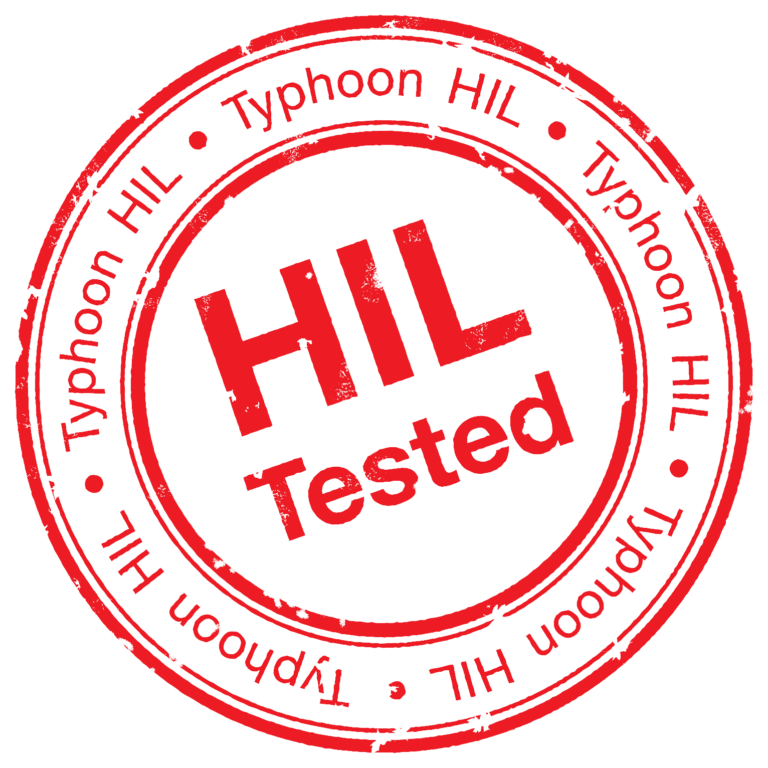
7 Reasons Why HIL Tested is Becoming Ubiquitous
December 6, 2018
The rapid digital transformation of the energy sector, driven by the Fourth Industrial Revolution, is ushering in a new era of complexity and risk. As the grid evolves into a cyber-physical system, rigorous testing becomes paramount to ensure reliability, safety, and security. HIL Testing emerges as a critical methodology in this landscape, offering a systematic approach to validate software and firmware be…
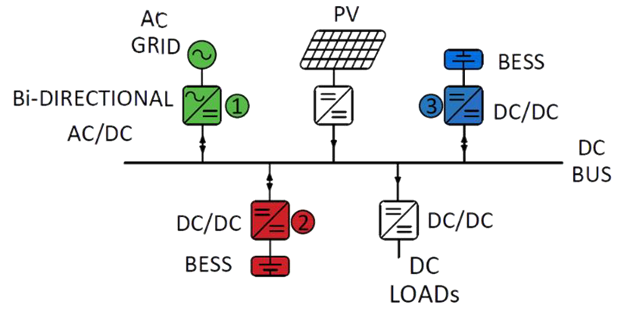
FREEDM Systems Center Spotlight with Subhashish Bhattacharya
June 20, 2018
At the Future Renewable Electric Energy Delivery and Management (FREEDM) Systems Center at North Carolina State University, U.S. universities and industry partners are focusing on modernizing the electric grid using advanced power electronics. Dr. Subhashish Bhattacharya, a founding faculty member at the FREEDM Systems Center, concentrates his research on power electronics and power systems, including DC Mi…
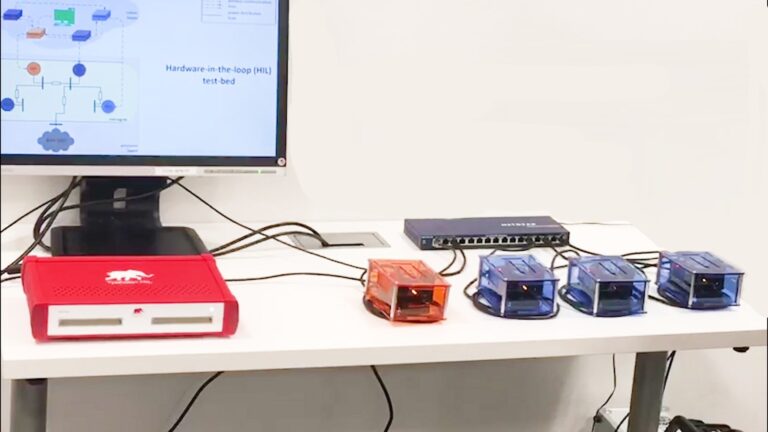
Distributed Microgrid Controls and Communication
April 7, 2018
This blog article delves into the evolution from centralized to distributed microgrid control architectures, highlighting the innovative work by researchers at the University of Illinois at Urbana-Champaign (UIUC). Funded by ARPA-E, these researchers have developed a distributed controller architecture that uses multiple microcontrollers or nodes to communicate and achieve consensus, eliminating the need fo…

4 Questions and Answers About Resilient Energy
December 15, 2017
Resilience is our capacity to survive and thrive amidst change and uncertainty, emphasizing adaptability over traditional risk management. In the context of energy systems, resilience is vital as energy underpins many aspects of our lives, from social interaction to commerce. Designing for resilience means incorporating flexibility into systems rather than merely protecting them. Distributed controls, as se…
{{text}}